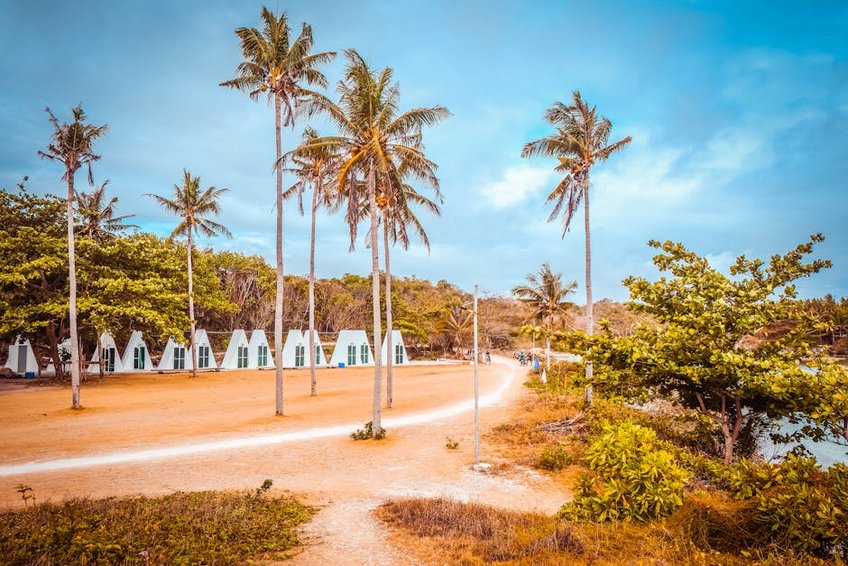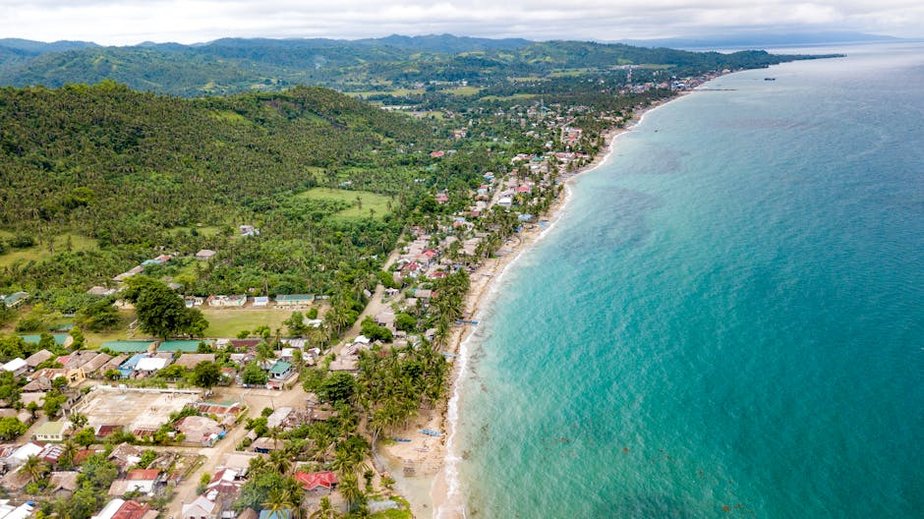Cebu Beaches: Your Ultimate Guide to Paradise in the Philippines
Imagine powdery white sand beneath your feet, crystal-clear turquoise waters stretching to the horizon, and palm trees swaying gently in the tropical breeze. Cebu beaches represent some of the most spectacular coastal destinations in Southeast Asia, offering everything from vibrant coral reefs teeming with marine life to secluded coves perfect for romantic getaways. Whether you’re an adventure seeker looking to dive with whale sharks or a relaxation enthusiast seeking the perfect sunset spot, Cebu’s diverse shoreline delivers unforgettable experiences. The island’s unique combination of accessibility, natural beauty, and cultural richness makes it a top choice for travelers from around the world. You’ll discover that each beach has its own personality and charm, from the famous long stretch of white sand at Bantayan Island to the dramatic cliffs surrounding Moalboal’s coastline. As you plan your tropical escape, you’ll find that Cebu beaches offer exceptional value compared to other premium beach destinations, with world-class amenities available at surprisingly affordable prices.
Cebu Beaches Essential Information – What Every Traveler Should Know
Before embarking on your Cebu beach adventure, understanding the island’s geography and infrastructure will significantly enhance your experience. Cebu Island stretches 196 kilometers from north to south, with beaches distributed across both the mainland and surrounding smaller islands. The eastern side facing the Camotes Sea generally features calmer waters and more developed resort areas, while the western coast along the Tañon Strait offers dramatic drop-offs ideal for diving and snorkeling. The tropical climate means you can enjoy Cebu beaches year-round, though weather patterns do vary significantly between the dry season (December to May) and wet season (June to November). English is widely spoken throughout the tourist areas, making navigation and communication straightforward for international visitors. The local currency is the Philippine Peso, though most beach resorts accept USD and major credit cards, with ATMs available in all major beach destinations.
Geographical Overview – Understanding Cebu’s Layout
- Northern Cebu beaches like Bantayan and Malapascua offer powdery white sand and spectacular sunsets, approximately 3-4 hours from Cebu City
- Central beaches around Mactan Island provide luxury resort experiences just 20 minutes from the international airport
- Southern destinations including Moalboal and Oslob feature dramatic coral walls and unique marine encounters 2-3 hours from the city
- Budget travelers can enjoy Cebu beaches for $30-50 per day including basic accommodation, local meals, and public transportation
- Mid-range visitors should budget $80-150 daily for comfortable hotels, restaurant meals, guided tours, and private transportation
- Luxury experiences range from $200-400+ per day featuring premium resorts, fine dining, private boat charters, and spa treatments
- Philippine Department of Tourism Official Site
- Cebu Provincial Government Official Portal
Cultural Context and Local Customs
While enjoying Cebu beaches, you’ll notice the warm hospitality characteristic of Filipino culture. The local population predominantly practices Catholicism, which influences many aspects of daily life and celebrations. When visiting beach communities, dressing modestly when away from the beach itself shows respect for local customs. The Filipino concept of “bayanihan” or community spirit means you’ll often find locals eager to help visitors navigate and enjoy their surroundings. Tipping, while not mandatory, is appreciated for exceptional service, with 10% being customary in restaurants and for tour guides. Remember that despite the relaxed beach atmosphere, the Philippines maintains conservative values in many aspects, so public displays of affection should be kept minimal outside resort areas.

Cebu Beaches Planning Your Trip – Timing, Budget and Preparation
Strategic planning transforms a good Cebu beach vacation into an extraordinary one. The ideal timing depends largely on your priorities: December through February offers perfect weather but higher prices and crowds, while the shoulder months of March-May and October-November provide a balance of good conditions and relative tranquility. Your budget will stretch further if you avoid peak holiday periods like Christmas, New Year, and Holy Week when prices can double. For accommodation, you’ll find everything from basic beach huts starting at $15 per night to luxury resorts exceeding $300, with most travelers finding excellent options in the $50-150 range. Transportation between beaches varies from air-conditioned buses ($3-10 depending on distance) to private van rentals ($50-80 per day), with ferries to islands costing $5-20 per person. Don’t forget to allocate budget for activities like island hopping tours ($20-40 per person) and diving experiences ($30-80 per dive).
Best Time to Visit Cebu Beaches
The absolute prime time for Cebu beaches falls between January and April when rainfall is minimal, humidity is lower, and seas are generally calm. During these months, you’ll experience maximum sunshine hours perfect for beach activities and water sports. The summer months of March to May bring warmer temperatures (averaging 32-35°C) that are ideal for swimming but can feel intense for extended sunbathing. If you prefer fewer crowds and don’t mind occasional brief showers, the months of October and November offer good value with generally manageable weather patterns. The rainy season from June to September sees more frequent precipitation, but showers often pass quickly, and you’ll benefit from significantly lower accommodation rates and fewer tourists. For whale shark encounters in Oslob, these magnificent creatures are present year-round, though visibility may be better during drier months.
Budget Planning and Costs for Cebu Beaches
Essential Preparation Checklist
Preparing properly ensures you maximize your enjoyment of Cebu beaches. First, verify passport validity (至少6 months remaining for most nationalities) and check visa requirements – many countries receive 30-day visa-free entry. Purchase comprehensive travel insurance that specifically covers water activities and medical evacuation. Pack reef-safe sunscreen to protect Cebu’s delicate marine ecosystems, along with waterproof bags for electronics. Bring medications including anti-diarrheal tablets and motion sickness remedies if prone to seasickness during island hopping. Download offline maps and transportation apps like Grab for getting around urban areas. Inform your bank of travel plans to avoid card blocks, and carry some USD or Philippine Pesos in small denominations for areas where credit cards aren’t accepted. Finally, pack appropriate clothing including light layers, swimwear, and modest attire for visiting towns and religious sites.
Cebu Beaches Top Attractions and Activities – Must-Experience Adventures
Cebu’s coastline offers an incredible diversity of experiences that will create lasting memories. The island is rightly famous for its world-class diving, with sites like Moalboal’s Pescador Island offering breathtaking wall dives where you can witness spectacular coral formations and abundant marine life including schools of sardines that move in mesmerizing patterns. For non-divers, snorkeling at these sites provides equally impressive encounters just below the surface. The whale shark interaction in Oslob represents a truly unique opportunity to swim with these gentle giants in their natural habitat, though it’s important to choose operators who practice responsible tourism. Beach hopping between Cebu’s various coastlines reveals dramatically different landscapes from the long white sand stretches of Bantayan to the secluded coves of Malapascua. Don’t miss the magical experience of swimming with sea turtles at Talima Marine Sanctuary or witnessing the spectacular Kawasan Falls where turquoise waters cascade through jungle surroundings.
Must-See Beach Highlights in Cebu
Among Cebu’s countless beach destinations, several stand out as truly unmissable experiences. Bantayan Island in the north offers three kilometers of pristine white sand beach considered among the finest in the Philippines, with beachfront accommodations ranging from simple cottages to comfortable resorts. Moalboal on the west coast provides access to phenomenal dive sites including the famous sardine run where millions of fish move in synchronized patterns just meters from shore. Malapascua Island, though smaller, boasts spectacular beaches and serves as the best place in the world to reliably see thresher sharks on early morning dives. For convenience and luxury, the beaches of Mactan Island provide five-star resorts with all amenities just minutes from Cebu International Airport. Finally, the Camotes Islands offer a more remote experience with breathtaking cave pools, underground rivers, and virtually untouched beaches that make the journey worthwhile.
Hidden Gems and Local Favorites
Beyond the famous destinations, Cebu hides numerous lesser-known beaches that offer incredible experiences without the crowds. In the south, Sumilon Island features a stunning sandbar that changes shape with the tides and offers spectacular snorkeling around its marine sanctuary. The beaches around Alcoy provide pristine conditions and opportunities to see whale sharks in a less commercialized setting than Oslob. For adventure seekers, the cliff jumps at Lambug Beach provide adrenaline-pumping fun with safety measures in place. Local families often frequent Tingko Beach in Alcoy for its calm waters and abundance of fresh seafood stalls. If you’re willing to venture further, Carnaza Island in the far north offers virtually untouched beaches with basic accommodations that provide a true escape from modernity. These hidden gems often require more effort to reach but reward travelers with authentic experiences and breathtaking natural beauty.
Cebu Beaches Practical Travel Information – Transportation, Accommodation and Logistics
Navigating Cebu’s beach destinations requires understanding the island’s transportation network and accommodation options. The international airport serves as the main entry point, with direct flights from major Asian hubs and connecting flights worldwide. From the airport, you can reach Mactan beaches in under 30 minutes, while northern destinations like Bantayan require 3-4 hours by road plus ferry transfer. The southbound routes to Moalboal and Oslob take 2-3 hours via modern highways. For inter-island travel, numerous ferry companies connect Cebu to neighboring islands with regular schedules. Accommodation ranges from international luxury chains on Mactan Island to family-run beach resorts and backpacker hostels in more remote locations. Advance bookings are essential during peak season (December-April) but may offer more flexibility during quieter periods. Most beach areas now have reliable mobile coverage and WiFi, though speeds may vary in more remote locations.
| Accommodation Type | Features and Amenities | Price Range (USD per night) |
|---|---|---|
| Budget Beach Huts | Basic facilities, fan cooling, shared bathrooms, beachfront location | $15-30 |
| Mid-range Resorts | Air conditioning, private bathroom, swimming pool, restaurant | $50-120 |
| Luxury Properties | Five-star amenities, spa, multiple restaurants, private beach areas | $150-400+ |


